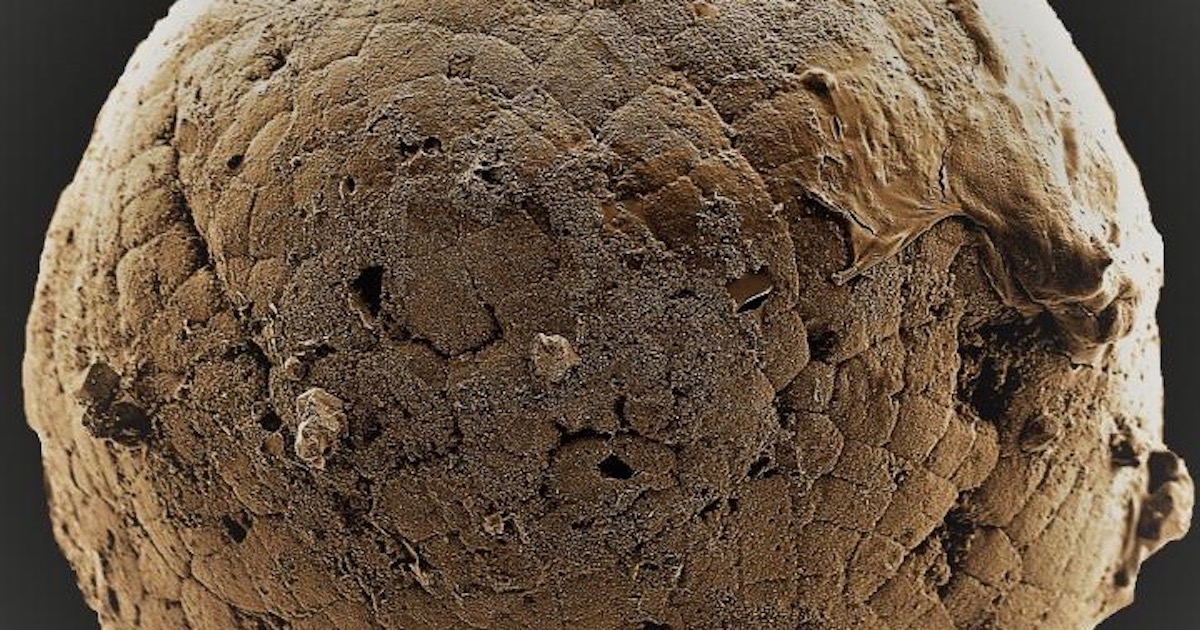 Evolution
Evolution
First Animals? Fossils Won’t Fit Cambrian Evolution

Evolutionists are still fighting over the first animals. Each new fossil creates new questions, but there is one constant: bluffing confidence that Darwinism is true. Here are some new developments in the Cambrian Explosion debates.
Are Biofilms Animals?
According to Live Science, “Early life may have been far more like animals than we thought, suggests new research that shows bacteria can ‘develop’ like an embryo.” Croatian scientists looked at biofilm development in the laboratory and envisioned animals trying to emerge. A hint of Haeckel’s recapitulation theory popped into their crystal ball.
The order of gene expression during biofilm growth mirrors the timing of these genes’ evolution — just like the expressions of genes in developing animal embryos….
“This means that bacteria are true multicellular organisms just like we are,” said Domazet-Lošo. “Considering that the oldest known fossils are bacterial biofilms, it is quite likely that the first life was also multicellular, and not a single-celled creature as considered so far.” [Emphasis added.]
Needless to say, this idea is not going to sit well with serious Cambrian experts, since it cannot account for the 20-some-odd hierarchical body plans that appeared in the Cambrian explosion. But it works in the lab!
The team cautions these results are limited to single-species biofilms in laboratory conditions, so more research is required to see if the findings also hold true in the natural environment with multi-species interactions.
Oxford’s journal Molecular Biology and Evolution gave it a plug, Haeckel and all. The paper by Futo et al., (1 Sept 2020) begins,
Correspondence between evolution and development has been discussed for more than two centuries. Recent work reveals that phylogeny−ontogeny correlations are indeed present in developmental transcriptomes of eukaryotic clades with complex multicellularity.
Conservation Is Not Evolution
The evolution of enhancers (genes that regulate protein transcription) is “weird” according to an article in The Scientist, “Regulators of Gene Activity in Animals Are Deeply Conserved.” Researchers put the enhancers from a sponge into a zebrafish and a mouse, and they still worked. That can only mean one thing: evolution happens, even when it doesn’t evolve anything.
The results of the new study, published November 5 in Science, show that, at least in some cases, enhancer function persists across species that last shared a common ancestor as far back as 700 million years ago.
Wong et al., writing in the journal Science, deciphered “Deep conservation of the enhancer regulatory code in animals.” There must have been an enhancer explosion when sponges were the only game in town.
Transgenic expression of sponge enhancers in zebrafish and mice demonstrates that these sequences can drive cell type–specific gene expression across species. These results suggest an unexpectedly deep level of conservation of gene regulation across the animal kingdom maintained over the course of metazoan evolution.
Return of the Artifact Hypothesis
Stephen Meyer in Darwin’s Doubt discussed the excuse that a lack of animal fossils in the Precambrian was an artifact of collection. This excuse returns in news from Uppsala University about microfossils that they believe could be animal embryos: “Half a billion years old microfossils may yield new knowledge of animal origins.”
When and how did the first animals appear? Science has long sought an answer. Uppsala University researchers and colleagues in Denmark have now jointly found, in Greenland, embryo-like microfossils up to 570 million years old, revealing that organisms of this type were dispersed throughout the world.
Hoping that their work “is likely to prompt many interesting discussions,” they point out that these microfossils appear in Greenland and in China during the Ediacaran period. But will they explain the Cambrian explosion?
“We believe this discovery of ours improves our scope for understanding the period in Earth’s history when animals first appeared — and is likely to prompt many interesting discussions,” says Sebastian Willman, the study’s first author and a palaeontologist at Uppsala University.
The existence of animals on Earth around 540 million years ago (mya) is well substantiated. This was when the event in evolution known as the “Cambrian Explosion” took place. Fossils from a huge number of creatures from the Cambrian period, many of them shelled, exist. The first animals must have evolved earlier still; but there are divergent views in the research community on whether the extant fossils dating back to the Precambrian Era are genuinely classifiable as animals.
Admittedly, the microfossils are a matter of interpretation: “some think they are eggs and embryos from primeval animals.” What the microfossils show, instead, is that the Precambrian strata were capable of preserving adult animals if they had existed. In Darwin’s Doubt, Meyer uses this fact to support the suddenness of the Cambrian explosion.
False Lead
A brief article on Phys.org teases that a “Study reveals true origin of oldest evidence of animals.” Spoiler alert: no animals were found. Instead, two teams of evolutionary scientists, claiming to “have resolved a longstanding controversy surrounding the origins of complex life on Earth,” took another look at steroid signatures in rock thought to be produced by sponges. Did that prove animals had evolved before the explosion?
The joint studies found molecular fossils extracted from 635-million-year-old rocks aren’t the earliest evidence of animals, but instead common algae.
The researchers from The Australian National University (ANU), Max Planck Institute and Caltech say the finding has big implications for our understanding of evolution.
But then we learn that geological processes can also produce the steroids, so biology didn’t have anything to do with it. What were the big implications, then? No evolution!
“While it holds true sponges are the only living organism which can produce these steroids, chemical processes can mimic biology and transform common and abundant algae sterols into ‘animal’ sterols,” he said.
That makes the headline very deceptive: “Study reveals true origin of oldest evidence of animals.” The “true origin” was the oldest evidence of non-animals!
Another Complex Arthropod from China
The Chengjiang fossil bed has produced another beautifully preserved animal named Kylinxia. SciTech Daily has beautiful pictures of it. The scientists try to make it a “missing link” between Anomalocaris and true arthropods, but it’s too late. The Cambrian explosion had already happened.
“Owing to very special taphonomic conditions, the Kylinxia fossils exhibit exquisite anatomical structures. For example, nervous tissue, eyes and digestive system — these are soft body parts we usually cannot see in conventional fossils,” said Prof. Zhao Fangchen, co-corresponding author of the study.
Kylinxia shows distinctive features of true arthropods, such as a hardened cuticle, a segmented trunk and jointed legs. However, it also integrates the morphological characteristics present in very ancestral forms, including the bizarre five eyes of Opabinia, known as the Cambrian “weird wonder,” as well as the iconic raptorial appendages of Anomalocaris, the giant apex predator in the Cambrian ocean.
That is the issue. Complex, hierarchical body plans with organ systems and sophisticated behaviors appear in the Cambrian suddenly without ancestors. They are not bacterial biofilms. They are not sponge steroids. They are not questionable microfossils. They are animals, and they exploded onto the scene, confounding Darwin and all the evolutionists that have followed him.

